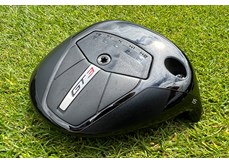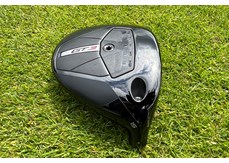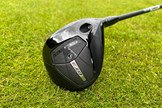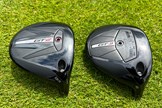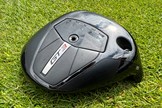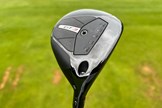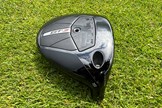Maximum Control, Maximum Power: The Titleist GT3 Fairway Wood Review
Last updated:
-
At a glance
- TG Rating
- Owner Rating
-
Pros
- Classic looks behind the ball
- Plenty of options to dial in
- New technology is impressive
-
Cons
- Not the best for 'sweeper' swings
What we say...
With GT3 fairway woods, Titleist have kept the category-defining adjustability the TSR3 is known for while adding their next-gen technology breakthrough
Fairway woods and putters share something in common – more than just being golf clubs, at least.
With a putter, golfers can spend years with the same old flatstick once they find one that works. It becomes part of you: you know the weight, the feel, the looks – it has your trust. Fairway woods are the same.
Finding one that matches what you need can sometimes feel like tracking down a unicorn, it might not even exist. This has largely been my life with fairways. I struggle to find a middle ground between what helps me play good golf, with shallower faces working best, and what I want to look down at in more classic, compact, deeper heads.
If you’re looking for a blend between those two styles, like I was, I’d be more than happy to point you to the GT2 fairway wood. For those who only have an interest in the latter style of fairways, the GT3 may be the new number one on your ‘must have’ list.
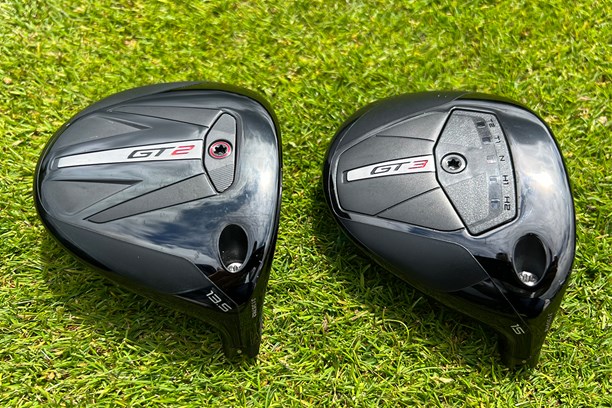
Rolling in the deep
Titleist are not ones to shy away from using Tour feedback in their R&D. This is no different for the GT3, with players who used the GT3 making specific requests.
The first request made was for a deeper face than TSR3. Both models of TSR had a similar design to one another, which I’m a fan of in drivers where impact is effectively in mid-air, minus a sliver of wood, and interaction with the ground is zero (or it should be).
Fairway Woods are different. They can, and will, interact with the ground so finding the correct style is imperative. If you’re taking divots with your fairway woods, which you’ll see more often with tour professionals, then a deeper head will work better as the mass is more in line with where your strike is likely located – higher on the face.
This refinement to the GT3 isn’t only limited to the height of the club. Titleist engineers have also flattened the sole curvature on both the heel and toe sides to enable the club to sit more cleanly on the ground. This second part of the shape change is also to be found on the GT2. This allows for more help on strikes that find either side of the face as impact will now be higher on the head, increasing forgiveness.
Finally, the Metalwoods team have taken inspiration from the in-house Irons department and introduced a new Forged L-Cup face. L-Cup, as we’ve seen in the Titleist T-series irons, wraps a forged 465 stainless steel face around the sole of the wood rather than welding together on an edge, further enhancing flexibility on low-face misses.
Precision from distance
Best for Adjustability
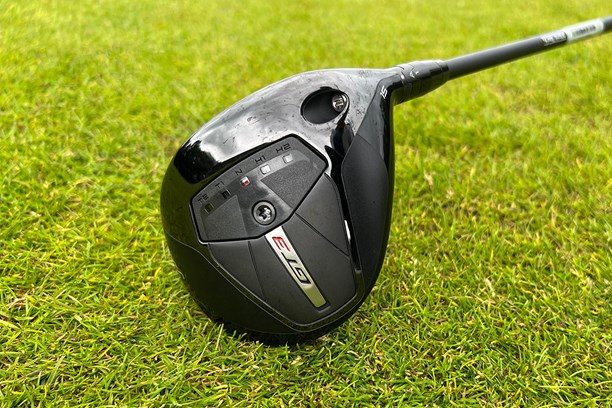

Pros
- Classic looks behind the ball
- Plenty of options to dial in
- New technology is impressive
Cons
- Not the best for 'sweeper' swings
| Lofts: | 15º / 16.5º / 18º (RH/LH) |
| Shafts: | Project X Denali Red, Mitsubishi Tensei 1K Blue, Project X HZRDUS Black 5th Gen, Mitsubishi Tensei 1K Black + Premium Upcharge Graphite Design Tour AD-VF, Tour AD-DI, and Tour AD-UB |
| Grip: | Titleist Universal 360 Grip |
| Weight Options: | 8g / 10g / 12g (Standard) / 14g / 16g / 18g |
- Proprietary Matrix Polymer material
- Thermoform Process Crown
- Forged L-Cup Face Design
- Tour-Inspired Shaping
I’ve been surprised by how much extra help there is when finding the low parts of the GT3 compared to previous versions. The flight does stay low due to that deeper face, but the ball speed retention is great, never dropping below 6mph less than the cleanest strike I had during testing.
My best strikes saw, as expected, a higher flight but one that never turned into anything too floaty. There is more spin in the GT3 than the GT2, but it’s kept this manageable and it never feels like you’re getting more spin than you’d expect to see. Part of this is because, despite taller faces typically raising CG (center of gravity), Titleist have made some of their boldest changes to retain weight as low in the head as they can.
Seamless construction
With a new name normally signaling a new technology, I was expecting something different from the company when we arrived at Titleist’s UK Performance Center in Woburn. I did not think I would see anything quite like this from Titleist.

For this generation, an in-house material known as Proprietary Matrix Polymer has been introduced to the production of the crown using a new Thermoform process. These two technologies work in tandem, creating a final product that is both classically Titleist and a complete direction change.
Let’s start with Thermoform.
Thermoforming is a plastic bending process. With it, you can manufacture more complex shapes with carbon fiber. This is helpful as it allows the new crown in the GT3 to be bent around the edges of the head and be connected to the sole.
When choosing to move to carbon fiber, Titleist engineers needed to make sure that the material switch was worth it. The company has always argued in the past that the reason they wanted to stay with Titanium crowns is that, with carbon fiber, any weight savings are negated by the epoxy needed to glue the components together.
With Thermoform allowing for a connection on the underside of the club, Titleist can now apply epoxy where it will help keep CG low – a major factor in the decision to shift to their new material.
The Proprietary Matrix Polymer, or PMP, is exclusive to the GT line, and Titleist in general, with the entire creation coming from the R&D team. The material’s weight-saving is great on its own, but the big selling point is that the sound of a Titleist, distinctly metallic, has been retained.
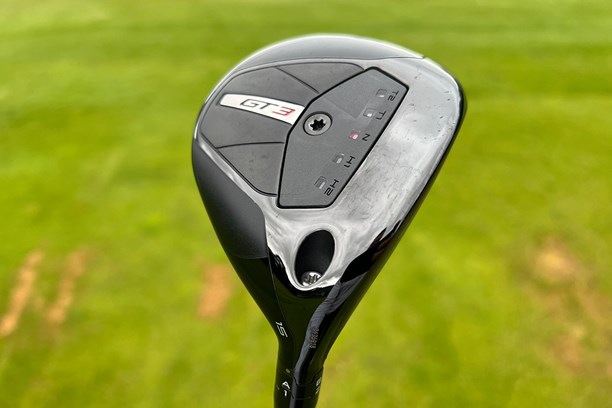
How Titleist have achieved this I have no clue but, sure enough, whether I was hitting balls or throwing a sample around the fitting bay (at my fitter’s enthusiastic request, I should add), the expected sound of steel was still ever-present. It’s a little bit deeper than before, although that simply added to my feeling of power from each shot.
“We had very ambitious CG targets for both models and the only way we were going to get the CG where we wanted it was through the multi-material crown,” said Tom Bennett, Titleist Clubs’ Principal Product Manager. “That discretionary weight allowed us to significantly increase launch in both models, drop spin considerably in GT2, and keep spin low in GT3.”
A Sure Fit
As I said from the beginning, fairway woods are difficult for me. I want to love GT3. I DO love GT3. The shape of the head is timeless as a design: compact, and inviting you to hit down hard on it. Equally, the feeling is old-school Titleist, with feedback exactly how I want it, where I want it, letting me know what’s happened at impact immediately.
However, even with the full matrix of shafts at Titleist’s disposal, and with the full extent of weight adjustability from the Surefit CG Track on the base offering me 30 different combinations of weight and position, I’m still not the right fit for GT3.
When I did find a swing to make GT3 work, it does exactly what its supposed to. But I’m not a good enough golfer to manufacture a swing specifically for one club on a consistent basis, so GT2 was still what we decided was best for me.
In drawing a conclusion, I’d say this. GT3 is a fantastic fairway wood. But if you aren’t a golfer who swings a specific way, this Wood may end up causing you more issues than you might be willing to accept long-term.
About the author

Lewis Daff
Lewis Daff joined the Today’s Golfer digital team in 2024, having spent more than a decade in both big box golf retail and independent stores, working as a club fitter and builder.
Experienced with every level of golfer, from beginner to professional, he has achieved Master Fitter and Builder status with most major manufacturers, including Mizuno, Taylormade, and Callaway, helping him to cement both a wide and deep knowledge base. Lewis specializes in Clubs, Shafts, Training Aids, Launch Monitors and Grips.
In Lewis’ bag is Titleist GT3 Driver (9º) with Fujikura Ventus Black, Titleist GT2 Fairway Wood (15º), Wilson Staff D9 Forged 3-iron, Srixon ZX7 MKii Irons (4-PW), Titleist SM9 Wedges (52º, 60º), Toulon San Diego Putter, and Callaway Chrome Tour Ball.
Talk to Lewis about why steel shafts are now dead and graphite is the only way forward or any other equipment you’d like to debate via his email.
Product Information
Titleist GT3 Fairway Woods
RRP: $399.00 / £349.00 + $599.00 / £519.00 (Premium)
Lofts: 15º / 16.5° / 18° (RH/LH)
Head Size: 177cc / 177cc / 153cc
Lie: 56.5º / 57º / 57.5º
Standard Shaft Length: 43” / 43" / 42"
Stock Shaft Options:Project X Denali Red / Mitsubishi Tensei 1K Blue / Project X HZRDUS Black 5th Gen / Mitsubishi Tensei 1K Black
Premium Upcharge Shafts: Graphite Design Tour AD-VF / Tour AD-DI / Tour AD-UB
Stock Grip: Titleist Universal 360 Grip



